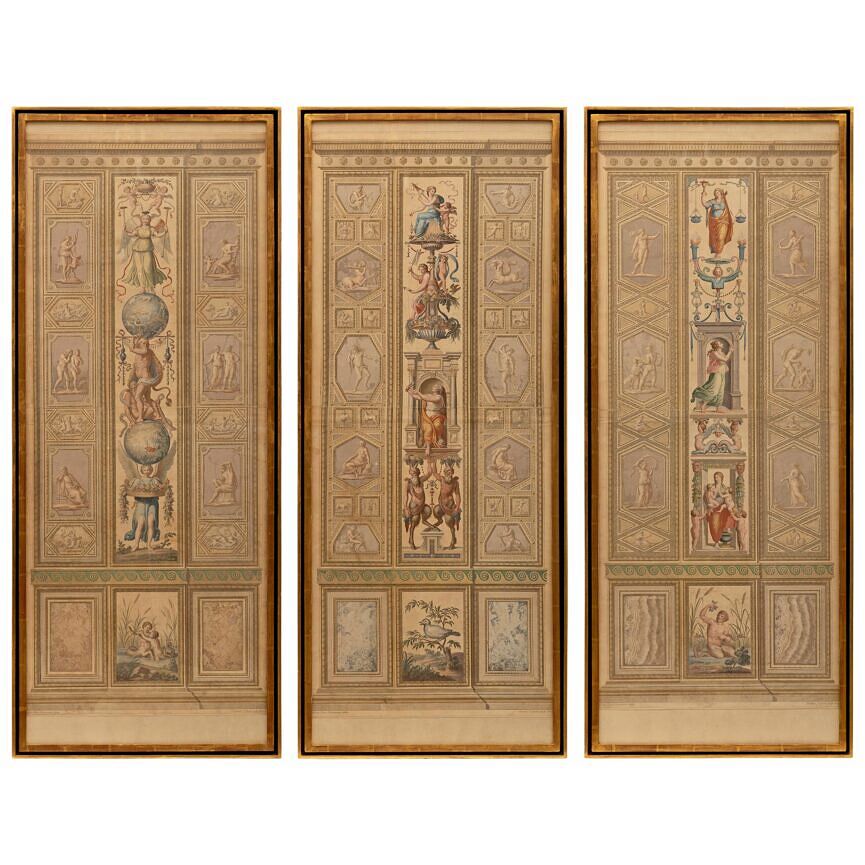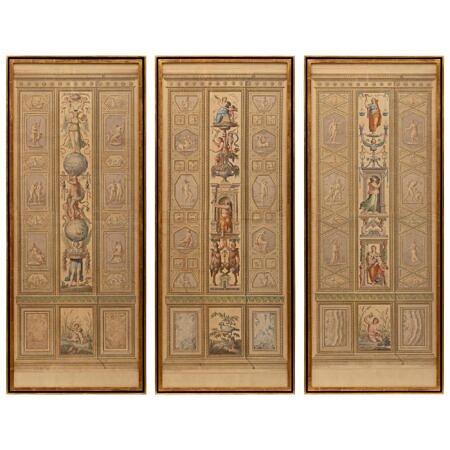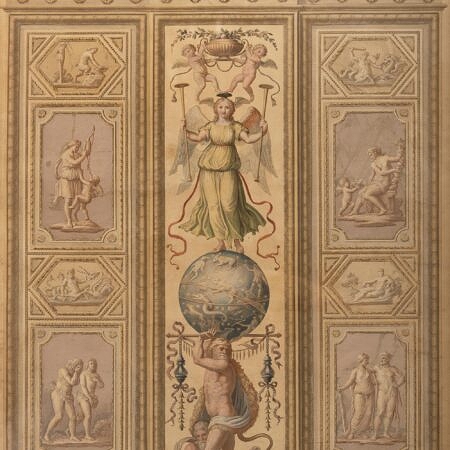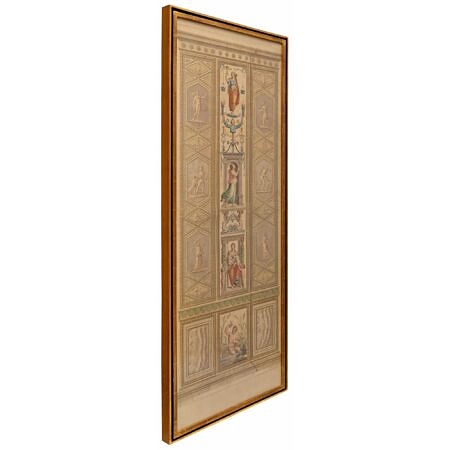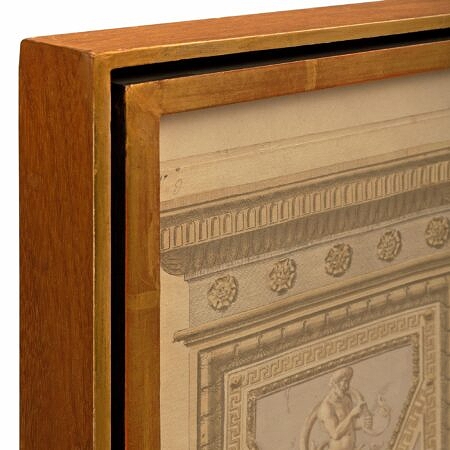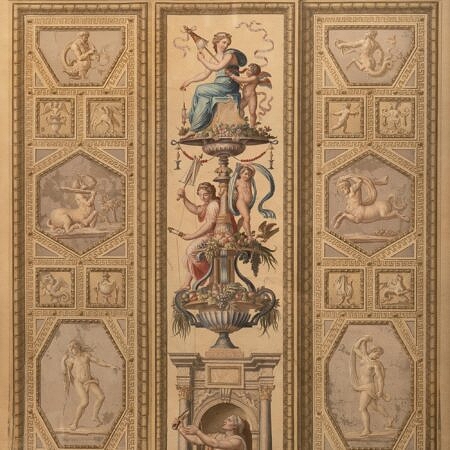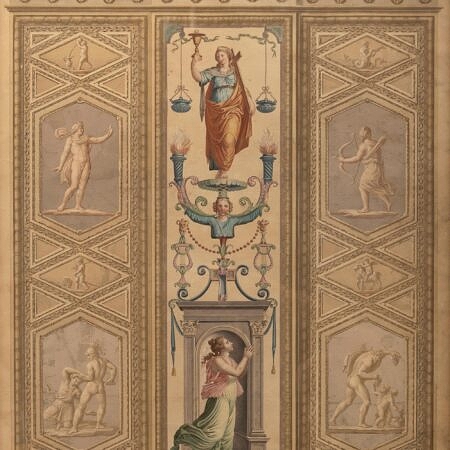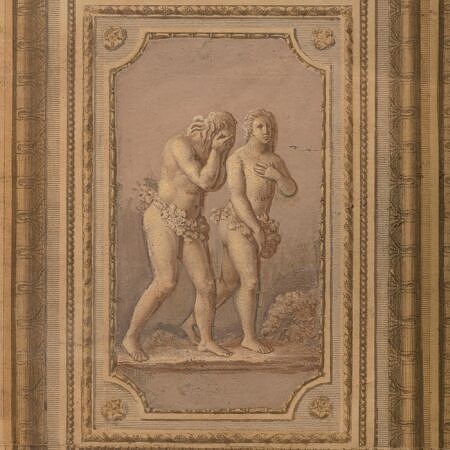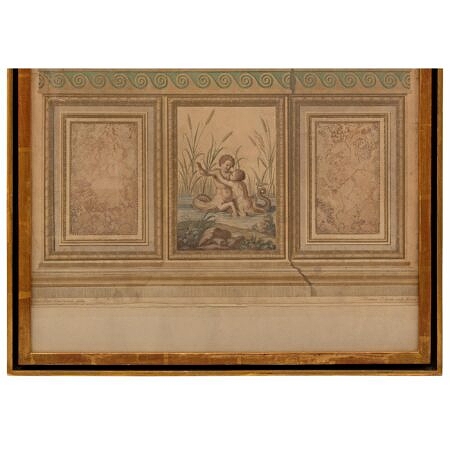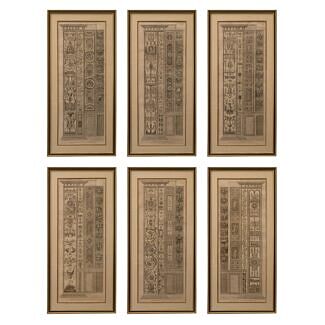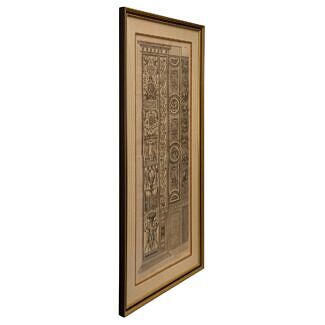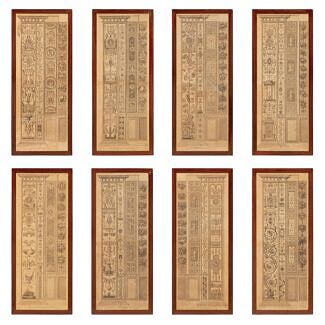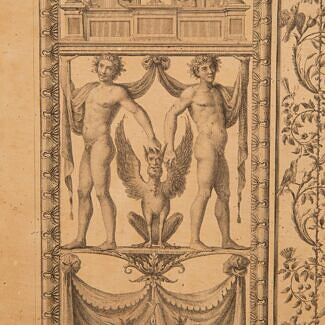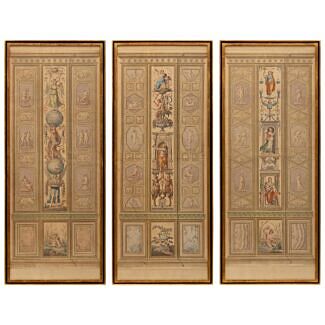A set of three Italian 18th century Louis XVI period engravings by Giovanni Volpato and Giovanni Ottaviani
Sorry, This item has sold
A stunning and extremely decorative set of three Italian 18th century Louis XVI period engravings by Giovanni Volpato and Giovanni Ottaviani. Each engraving is set within its original giltwood frame with a fine wrap around mottled band. Each depicts beautiful... — Read More
A stunning and extremely decorative set of three Italian 18th century Louis XVI period engravings by Giovanni Volpato and Giovanni Ottaviani. Each engraving is set within its original giltwood frame with a fine wrap around mottled band. Each depicts beautiful scenes of personages, satyrs, and colorful details amidst classic Roman scenes.
Giovanni Volpato (1733-1803) was born in Bassano del Grappa where he received his first training from his mother, an embroiderer, and then studied under Giovanni Antonio Remondini. In 1762 he went to Venice and worked with Joseph Wagner and Francesco Bartolozzi, engraving several plates after Piazzetta, Mariotto, Amiconi, Zuccarelli, Marco Ricci and others. In 1771 he moved to Rome, where he founded a school of engraving and gained a reputation for his series of plates after the frescoes of the Raphael Rooms and Loggias in the Vatican which became much in demand among visitors to Rome. In 1785, he established a porcelain factory that made ceramic replicas of Greco-Roman originals to satisfy the demand for antique art during the Neoclassic period.
Giovanni Ottaviani (1735-1808) was an Roman engraver best-known for his series of plates of the Vatican Loggie in the 1770s, of which he engraved the first two parts, and Volpato the third currently displayed at Blythe House in London. — Read Less
- Item # 11798
-
H: 45.75 in L: 18.75 in D: 1.25 in
H: 116 cm L: 48 cm D: 3 cm
- Italy
- 18th Century
- Giltwood
- Louis XVI Period Read More
- Giovanni Volpato Read More , Giovanni Ottaviani Read More
Related products
-
# 12350 - H: 50" L: 23" D: 1"
-
# 9294 - H: 46" L: 19" D: 3"


